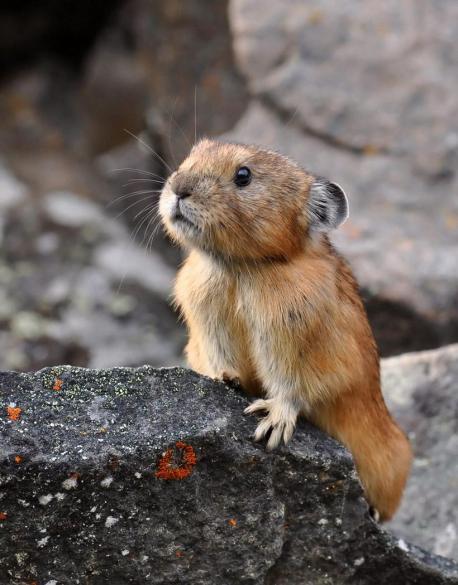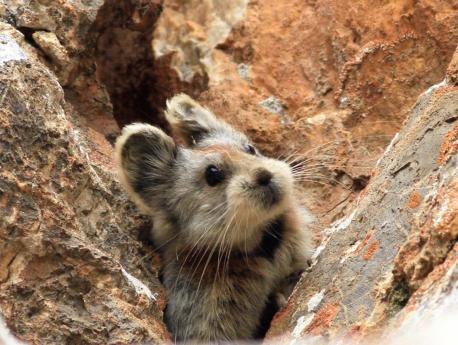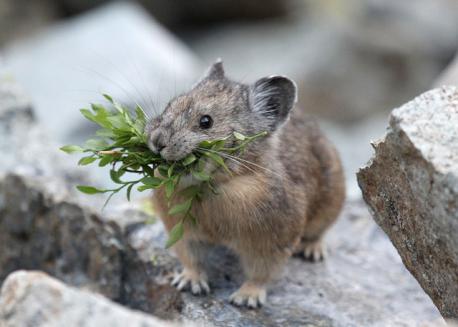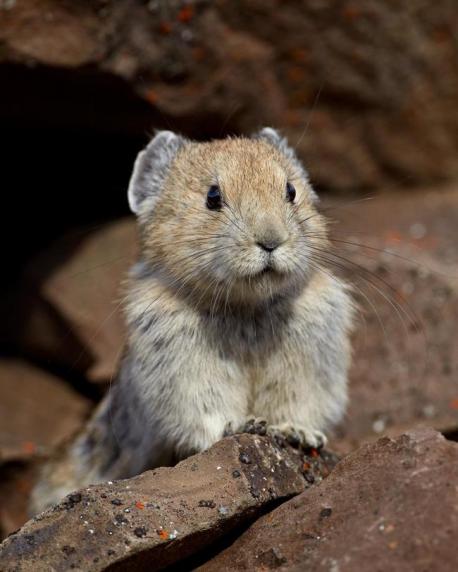Results: Pika
Published on 01/25/2019
(Sourcce: britannica.com) Pikas are normally found in mountainous areas at high elevations. Two species reside in North America, the rest being found primarily throughout Central Asia; 23 of them live entirely or partly in China, especially the Tibetan plateau. There are two distinctly different ecological niches occupied by pikas. Some live only in piles of broken rock (talus), whereas others inhabit meadow or steppe environments, where they construct burrows. The North American species and roughly half of the Asian species live in rocky habitats and do not make burrows. Rather, their nests are made deep in a labyrinth of talus adjoining alpine meadows or other suitable vegetation. The collared pika (O. collaris) of Alaska and northern Canada has been found on the isolated nunataks (crags or peaks surrounded by glaciers) in Kluane National Park, and O. macrotis has been recorded at 6,130 metres (20,113 feet) on the slopes of the Himalayas. The pika with the largest distribution, the northern pika (O. hyperborea), ranges from the Ural Mountains to the east coast of Russia and Hokkaido Island of northern Japan. Although the northern pika is considered a typical talus-dwelling species, it also is known to inhabit rocky terrain in coniferous forests, where it makes burrows under fallen logs and tree stumps.

QUESTIONS
GO to COMMENTS
Comments
1.
1.
Pika, (genus Ochotona), small short-legged and virtually tailless egg-shaped mammal found in the mountains of western North America and much of Asia. Despite their small size, body shape, and round ears, pikas are not rodents but the smallest representatives of the lagomorphs, a group otherwise represented only by hares and rabbits (family Leporidae). Have you ever seen one of these tiny creatures?

Yes
10%
268 votes
No
90%
2384 votes
2.
2.
The 29 species of pika are remarkably uniform in body proportions and stance. Their fur is long and soft and is generally grayish-brown in color, although a few species are rusty red. Unlike those of rabbits and hares, the hind limbs are not appreciably longer than the forelimbs. The feet, including the soles, are densely furred, with five toes in front and four behind. Most pikas weigh between 125 and 200 grams (4.5 and 7.1 ounces) and are about 15 cm (6 inches) in length. Do you live near an area where they live?

Yes
6%
152 votes
No
81%
2148 votes
Undecided
13%
352 votes
3.
3.
There are dramatic differences between pikas that inhabit rocky terrain and those that construct burrows in open habitats. Rock dwellers are generally long-lived (up to seven years) and occur at low density, their populations tending to be stable over time. In contrast, burrowing pikas rarely live more than one year, and their widely fluctuating populations may be 30 or more times as dense. These dense populations fluctuate widely. The contrast between rock-dwelling and burrowing pikas extends to their reproduction. Rock-dwelling pikas normally initiate only two litters per year, and generally only one of these is successfully weaned. It is believed that the second litter is successful only when the first offspring are lost early in the breeding season. Litter size of most rock dwellers is low, but burrowing pikas may produce multiple large litters each season. The steppe pika (O. pusilla) has been reported to have litters of as many as 13 young and breed up to five times in a year. Have you ever seen any of their "homes"?

Yes
6%
165 votes
No
94%
2487 votes
4.
4.
Unlike rabbits and hares, pikas are active during the day, with the exception of the nocturnal steppe pikas (O. pusilla). Being largely alpine or boreal species, most pikas are adapted to living in cold environments and cannot tolerate heat. When temperatures are high, they confine their activity to early morning and late afternoon. Pikas do not hibernate, and they are generalized herbivores. Where snow blankets their environment (as is often the case), they construct caches of vegetation called haypiles to provide food during winter. A characteristic behaviour of rock-dwelling pikas during summer is their repeated trips to meadows adjoining the talus to harvest plants for the haypile. One often repeated but untrue tale is that pikas lay their hay on rocks to dry before storing it. Rather, pikas carry their provisions straight to their haypile unless disturbed. Similar to other lagomorphs, pikas practice coprophagy (see rabbit) to provide additional vitamins and nutrients from their relatively poor-quality forage. Can you mention other animals with similar behavior?

Yes
12%
316 votes
No
88%
2336 votes
COMMENTS


